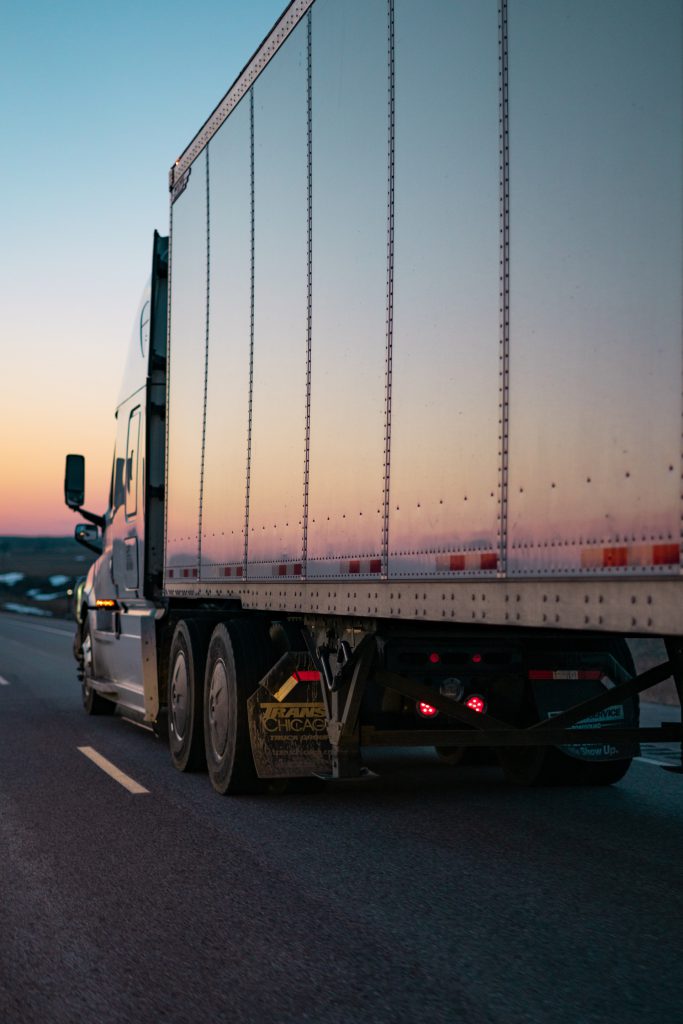The trucking industry suffers from a shortage of 4,500 drivers every year. This shortage is expected to grow over the years, with the growing demands for goods, and there is no practical plan that offers even a partial solution to the problem.
We are on the verge of a crisis that will soon affect our entire lives. All products relying on transportation might be stuck in warehouses or ports waiting for a trucker to pick them up for distribution.
When I grow up, I will be a truck driver.
If you ask children today what they would like to be when they grow up, it is doubtful- A truck driver would be one of the answers you’ll get. Children are no exception in this case. In our days, every Jewish mother dreams that her son will become a big shot in the High-tech industry. The Truck driver profession is simply not a desired profession anymore.
Gabi Ben Harush, chairman of the Israeli Drivers organization, claims that the negative image of the profession is unfairly attributed to it. The industry offers higher-than-average salaries, promotion options, and good social plans.
Still, it’s hard work that involves long hours on the roads in vehicles with high mass at a high safety risk. Complicated bureaucracy causes even the few interested in the profession to give it up, and soldiers who have been trained and employed as drivers in the army, to choose a different path.
The result is a drivers shortage that isn’t improving but only getting worst.
Danger on the road
According to the NRSA and the Green Light Association.
Over 60 people are killed yearly in truck-related crashes, more than one person a week.
Trucks weighing over 3.5 tons constitute only 7.2% of all cars on Israel’s roads, yet their involvement in fatal accidents is six times greater than that of private vehicles. The numbers are more alarming in trucks that weigh over 34 tons; their involvement in fatal accidents is 24 times greater than in private cars.
Countless tragedies on the roads due to human errors, safety deficiencies or disrupted road conditions. Whatever the reason, the tragic outcome remains the same, and the driver will have to face the consequences all of his life.
A U.S. study sponsored by the Federal Transportation Safety Vehicle Organization (FMCSA) conducted among 9,000 heavy truck drivers ages 21-65 indicates that drivers with more than a year of work experience are less involved in road accidents in their first year of work.
These data illustrate the importance of retaining experienced drivers and further emphasize the depth of the crisis.
Looking for solutions
In the U.S., the transportation industry faces similar challenges. Still, on a much larger scale (14.5 million heavy vehicles on the road at any given moment and an estimated number of 124,000 shortage of drivers by 2024), truck fleets have decided to put the driver’s well-being in the front seat. Accommodation and resting complexes for drivers on the road, an upgraded cabin with comfortable bed orthopedic seats, and other indulgences .are just some of the benefits that the companies offer the drivers. But what about safety measures?
In recent years, multiple companies have developed sophisticated systems that monitor truck driver actions and the road around trucks. These systems document the trip, the route of the road, and nearby vehicles at any given moment, assisting in actual driving and also in determining the driver’s liability in cases of accident or near-accident involving the car.
While these systems have been shown to reduce a truck driver’s chances of causing a deadly truck crash, not all truckers and trucking companies are on board with implementing the technology. Especially one aspect of the systems – installing truck driver cab cameras (also called driver-facing cameras).
Big brother enters the cabin.
According to the Federal Road Safety Authority (NHTSA), the chance of a heavy vehicle driver being involved in an accident or near-accident due to texting while driving is 23 times higher than that of a driver not texting.
The goal of the truck driver cab camera is to watch for anything that might take the driver’s attention from the road. Based on an alert from the system, the driver has the option to remove distractions or stop and take a rest.
But data from the U.S. Federal Road Safety Agency shows that transportation companies are having difficulty implementing the new technology.
J.J. Kelley survey shows that 25% of companies that implemented driver-facing cameras have experienced higher turnover rates; this could be one of the main reasons for the low implementation rate.
Another reason could be the drivers’ perception of privacy. Companies say driver-facing cameras represent a significant monetary investment and may also make drivers feel micro-managed and vulnerable, constantly watched as if Big brother had entered their cabin.
If these issues discourage more people from driving trucks, it could worsen the truck driver shortage.
The Israeli situation – many years of neglect
The latest report from the Green Light Association on the heavy vehicle industry points to many years of neglect. Including a severe shortage of drivers, a severe lack of proper training, vehicles traveling on serious safety deficiencies and endangering the driver and all The rest of the passengers on the roads, and a host of other problems and failures, these certainly do not contribute to the negative image of the profession.
One of the recommendations is to promote and implement technological systems that may contribute to accident prevention – sophisticated systems that monitor truck driver actions and the road around trucks, systems that exist in the market.
If we learn from the American experience, installing driver-facing cameras is not the best solution for preventing accidents or keeping the drivers safe and satisfied.
An innovative solution comes from an Israeli company called SaveOne. SaveOne’s technology addresses the need to monitor driving patterns and knows how to prevent the use of distracting technologies in advance.
When the vehicle starts moving, SaverOne’s app shifts the phone to safe mode, dues preventing the use of all distracting applications (such as text messages or email)—at the same time, allowing the use of non-distracting applications (companies can pre-define which applications can be used while driving.
A pilot conducted by the company last year in a trucking fleet indicated that the system could prevent most cellular distractions while driving and that drivers adapted a safer driving over time.
Implementing this technology is just a drop in the ocean; there is much to be done concerning the safety of the truckers and trucks, and by itself, it will not improve the driver shortage, but it will keep the roads safer and allow the drivers to be in control of the truck without the fear of having their privacy invaded.




